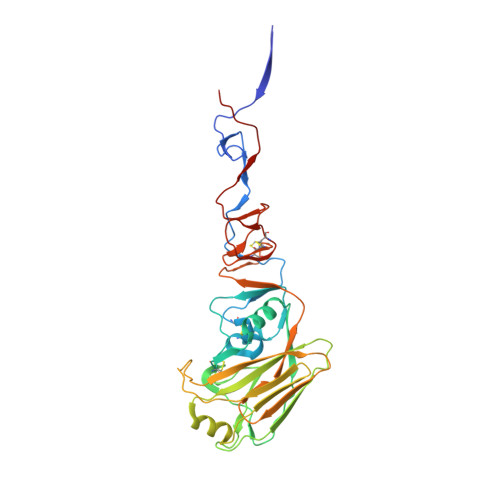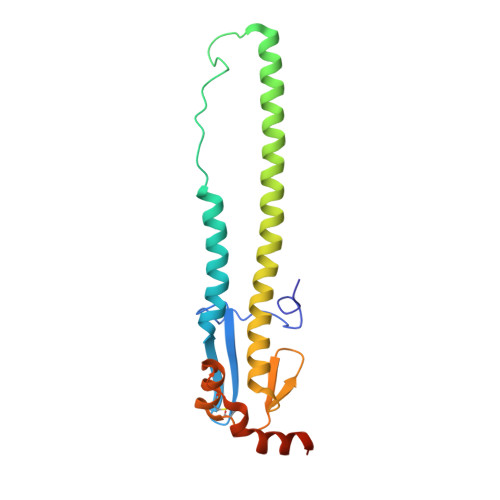The 150-Loop Restricts the Host Specificity of Human H10N8 Influenza Virus.
Tzarum, N., de Vries, R.P., Peng, W., Thompson, A.J., Bouwman, K.M., McBride, R., Yu, W., Zhu, X., Verheije, M.H., Paulson, J.C., Wilson, I.A.(2017) Cell Rep 19: 235-245
- PubMed: 28402848
- DOI: https://doi.org/10.1016/j.celrep.2017.03.054
- Primary Citation of Related Structures:
5TGO, 5TGU, 5TGV, 5TH0, 5TH1, 5THB, 5THC, 5THF - PubMed Abstract:
Adaptation of influenza A viruses to new hosts are rare events but are the basis for emergence of new influenza pandemics in the human population. Thus, understanding the processes involved in such events is critical for anticipating potential pandemic threats. In 2013, the first case of human infection by an avian H10N8 virus was reported, yet the H10 hemagglutinin (HA) maintains avian receptor specificity. However, the 150-loop of H10 HA, as well as related H7 and H15 subtypes, contains a two-residue insert that can potentially block human receptor binding. Mutation of the 150-loop on the background of Q226L and G228S mutations, which arose in the receptor-binding site of human pandemic H2 and H3 viruses, resulted in acquisition of human-type receptor specificity. Crystal structures of H10 HA mutants with human and avian receptor analogs, receptor-binding studies, and tissue staining experiments illustrate the important role of the 150-loop in H10 receptor specificity.
Organizational Affiliation:
Department of Integrative Structural and Computational Biology, The Scripps Research Institute, 10550 North Torrey Pines Road, La Jolla, CA 92037, USA.


















